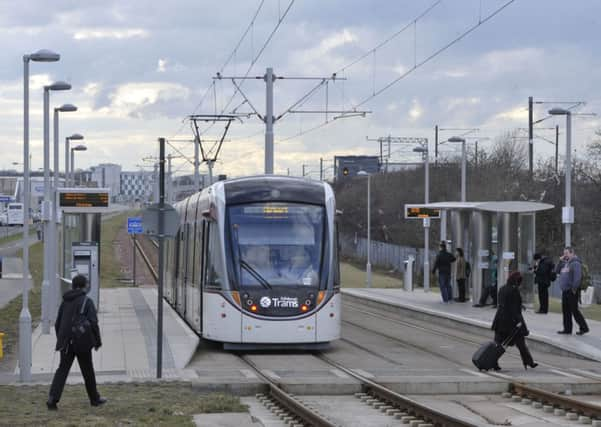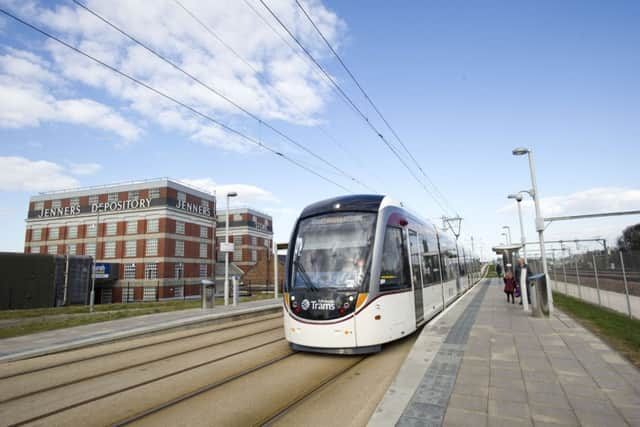‘11 years’ life expectancy gap between tram stops


Health chiefs today highlighted the seriousness of health inequalities in Scotland by pointing to the huge gap in life expectancy between two parts of the Capital.
Men living in the area near the Balgreen tram stop – Balgreen, Saughton and Saughtonhall – have a life expectancy of 79.4 years while those in the area around the Bankhead tram stop – Broomhouse, Sighthill and Forrester – can expect to live only until they are 68.5, a gap of almost 11 years.
Advertisement
Hide AdAdvertisement
Hide AdFor women in Balgreen and the surrounding neighbourhood, life expectancy is 82.6 while for those around Bankhead it is 74.4, a difference of 8.2 years.


But experts say the gap is not down to some people drinking or smoking more than others, but rather the more deep-seated problems of poverty and deprivation.
Andrew McAuley, of NHS Health Scotland, said the gap in life expectancy reflected the very different social and
economic circumstances of the two communities.
He said: “It provides further evidence that more work has to be done – by policy-makers, local government, the NHS and other service providers, community groups and employers – to address inequalities and close the gap in quality and length of healthy life between individuals.”
Mr McAuley said the evidence was clear that tackling unemployment and low incomes was more effective than educating people about smoking and drinking.
“Evidence shows information-based campaigns don’t have a huge impact on people’s health or health inequalities. They might change attitudes in the short term, but overall the effect is fairly minimal.
“In the past these are the things that have had the resources and funding because they are visible, but now we have more information about what works to help reduce health inequalities.”
Lothian Labour MSP Sarah Boyack said: “This is a stark illustration of the difference poverty and economic inequality makes to people’s life expectancy. While there is much we can do to invest in better health access to the NHS for people on low incomes we need to be tackling the root causes of health inequality.
Advertisement
Hide AdAdvertisement
Hide Ad“Scottish Labour is committed to making sure that we give young people a real choice of work or further education and training when they leave school and access to decent employment opportunities, with a living wage and a ban on zero-hours contracts.
“We need to end the growing poverty that has seen a huge increase in the number of food banks across Scotland and the debt and distress that has been created by the unfair bedroom tax.”
Keith Bell, secretary of Sighthill, Broomhouse and Parkhead community council and chairman of the one-stop shop which runs the food bank in Broomhouse, said he agreed there were major inequalities, but he did not think there was any “postcode envy”.
He said: “You are just fighting your daily battles, not worrying about whether someone in Stenhouse is living eight years longer. People just get on and make the best of what they have been dealt.”
But he said he believed the problem went back to schools.
“Too much of our education system is focused on thinkers not doers, and people are put off learning,” he said.
The life expectancy figures were highlighted ahead of a debate in the Scottish Parliament this afternoon on health inequalities and how to tackle them. A report by Holyrood’s health committee highlighted the degree of unanimity among those working in the field about the causes of poor health, such as low income and poverty, economic disadvantage, poor housing, low educational attainment and industrial decline.
It added: “There was also agreement that some interventions – for example, public health messages in relation to risky behaviours such as alcohol abuse, tobacco use, diet and exercise – had been shown to have had little or no impact on health
inequalities.”
Speaking ahead of the debate, Jamie Hepburn, Health Improvement Minister, said: “In order to solve health inequalities we need to get to the root cause of inequality. Scotland is leading the way in imbedding the pursuit of equality at the heart of our social policies. This includes promotion of fair work and a living wage, and helping more women and disabled people into the labour market. We are also investing in health and educational attainment so we can tackle the root causes of poverty, and working to ensure that the benefits of economic growth are felt right across Scotland.”
Advertisement
Hide AdAdvertisement
Hide AdProfessor Alison McCallum, director of public health at NHS Lothian, said: “The difference in life expectancy between these two tram stops is an obvious example of the need for further action to address the underlying determinants of health, which include income, education and a safe, supportive and healthy place to live.
“NHS Lothian has recognised health inequalities as a priority for many years and as director of public health I will continue to advocate for resources to address them and to work with others to create the evidence and action to help narrow the gap.”
WHAT CAN BE DONE?
A STUDY last year found introducing the living wage was the most effective measure to improve health and led to a modest reduction in health inequalities.
Increased benefits had a modest impact on improving health and health inequalities.
Walking or cycling to work instead of driving had a minimal positive effect on health but widened health inequalities. Increases in employment reduced inequalities only when targeted to the most deprived groups.
Alcohol interventions had modest positive impacts on health and health inequalities only when they were socially targeted, while smoking cessation and weight-reduction programmes had only minimal impacts even when socially targeted.